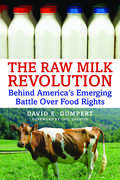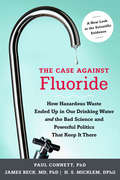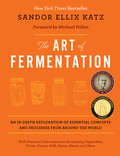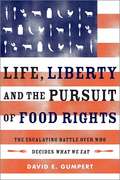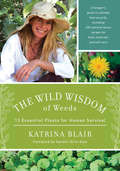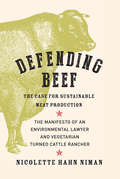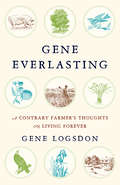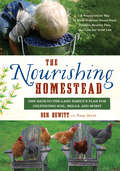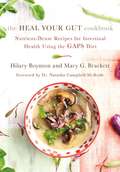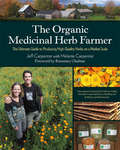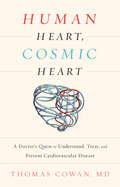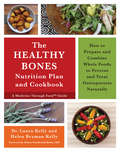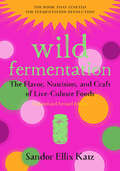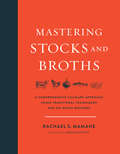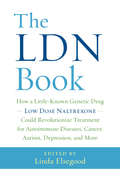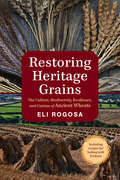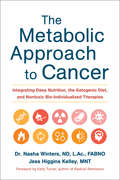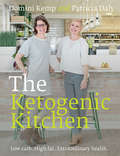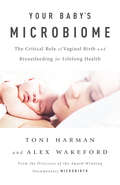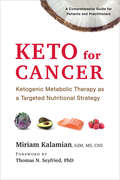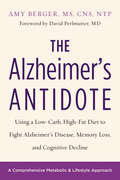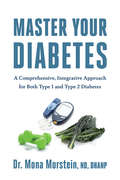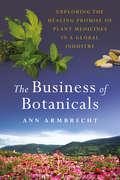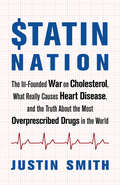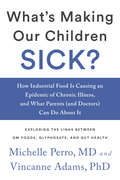- Table View
- List View
The Raw Milk Revolution
by David E. GumpertBeginning in 2006, the agriculture departments of several large states-with backing from the U. S. Food and Drug Administration-launched a major crackdown on small dairies producing raw milk. Replete with undercover agents, sting operations, surprise raids, questionable test-lab results, propaganda blitzes, and grand jury investigations, the crackdown was designed to disrupt the supply of unpasteurized milk to growing legions of consumers demanding healthier and more flavorful food. The Raw Milk Revolution takes readers behind the scenes of the government's tough and occasionally brutal intimidation tactics, as seen through the eyes of milk producers, government regulators, scientists, prosecutors, and consumers. It is a disturbing story involving marginally legal police tactics and investigation techniques, with young children used as political pawns in a highly charged atmosphere of fear and retribution. Are regulators' claims that raw milk poses a public health threat legitimate? In assessing the threat, The Raw Milk Revolution reveals that the government's campaign, ostensibly designed to protect consumers from pathogens like salmonella, E. coli 0157:H7, and listeria, was based in a number of cases on suspect laboratory findings and illnesses attributed to raw milk that could well have had other causes. David Gumpert dares to ask whether regulators have the public's interest in mind or the economic interests of dairy conglomerates. The Raw Milk Revolution provides an unsettling view of the future, in which nutritionally dense foods may be available largely through underground channels.
The Case Against Fluoride
by Paul Connett James Beck H. S. MicklemConnett (environmental chemistry and toxiclogy, St Lawrence U. , retired), Beck (emeritus, medical biophysics, U. of Calgary, Canada) and Micklem (emeritus, School of Biological Sciences, U. of Edinburgh, UK) line up evidence against the US national policy of water fluoridation. Writing for general readers with no presupposed scientific background, they argue that the scientific literature as well as findings of a 2006 review conducted by the National Research Council, overwhelmingly suggest that ingesting fluoride carries more health risks than it prevents. Organized into six parts, the volume covers ethical and general arguments against fluoride, evidence that fluoride is ineffective in preventing tooth decay, historical events leading to the adoption of mandatory fluoridation, evidence of harm, consideration of the margin of safety argument used by proponents, and motivations and techniques for the promotion of fluoridation. Copious references and endnotes are provided. Connett is the director of the Fluoride Action Network. Annotation ©2011 Book News, Inc. , Portland, OR (booknews. com)
The Art of Fermentation
by Sandor Katz"'The Art of Fermentation' is the most comprehensive guide to do-it-yourself home fermentation ever published. Sandor Katz presents the concepts and processes behind fermentation in ways that are simple enough to guide a reader through their first experience making sauerkraut or yogurt, and in-depth enough to provide greater understanding and insight for experienced practitioners. While Katz expertly contextualizes fermentation in terms of biological and cultural evolution, health and nutrition, and even economics, this is primarily a compendium of practical information--how the processes work; parameters for safety; techniques for effective preservation; troubleshooting; and more. With full-color illustrations and extended resources, this book provides essential wisdom for cooks, homesteaders, farmers, gleaners, foragers, and food lovers of any kind who want to develop a deeper understanding and appreciation for arguably the oldest form of food preservation, and part of the roots of culture itself. Readers will find detailed information on fermenting vegetables; sugars into alcohol (meads, wines, and ciders); sour tonic beverages; milk; grains and starchy tubers; beers (and other grain-based alcoholic beverages); beans; seeds; nuts; fish; meat; and eggs, as well as growing mold cultures, using fermentation in agriculture, art, and energy production, and considerations for commercial enterprises. Sandor Katz has introduced what will undoubtedly remain a classic in food literature, and is the first--and only--of its kind"--
Life, Liberty and the Pursuit of Food Rights
by David E. GumpertDo Americans have the right to privately obtain the foods of our choice from farmers, neighbors, and local producers, in the same way our grandparents and great grandparents used to do? Yes, say a growing number of people increasingly afraid that the mass-produced food sold at supermarkets is excessively processed, tainted with antibiotic residues and hormones, and lacking in important nutrients. These people, a million or more, are seeking foods outside the regulatory system, like raw milk, custom-slaughtered beef, and pastured eggs from chickens raised without soy, purchased directly from private membership-only food clubs that contract with Amish and other farmers. Public-health and agriculture regulators, however, say no: Americans have no inherent right to eat what they want. In today's ever-more-dangerous food-safety environment, they argue, all food, no matter the source, must be closely regulated, and even barred, if it fails to meet certain standards. These regulators, headed up by the U. S. Food and Drug Administration, with help from state agriculture departments, police, and district-attorney detectives, are mounting intense and sophisticated investigative campaigns against farms and food clubs supplying privately exchanged food-even handcuffing and hauling off to jail, under threat of lengthy prison terms, those deemed in violation of food laws. Life, Liberty, and the Pursuit of Food Rights takes readers on a disturbing cross-country journey from Maine to California through a netherworld of Amish farmers paying big fees to questionable advisers to avoid the quagmire of America's legal system, secret food police lurking in vans at farmers markets, cultish activists preaching the benefits of pathogens, U. S. Justice Department lawyers clashing with local sheriffs, small Maine towns passing ordinances to ban regulation, and suburban moms worried enough about the dangers of supermarket food that they'll risk fines and jail to feed their children unprocessed, and unregulated, foods of their choosing. Out of the intensity of this unprecedented crackdown, and the creative and spirited opposition that is rising to meet it, a new rallying cry for food rights is emerging.
The Wild Wisdom of Weeds
by Sandor Ellix Katz Katrina BlairThe Wild Wisdom of Weeds is the only book on foraging and edible weeds to focus on the thirteen weeds found all over the world, each of which represents a complete food source and extensive medical pharmacy and first-aid kit. More than just a field guide to wild edibles, it is a global plan for human survival. When Katrina Blair was eleven she had a life-changing experience where wild plants spoke to her, beckoning her to become a champion of their cause. Since then she has spent months on end taking walkabouts in the wild, eating nothing but what she forages, and has become a wild-foods advocate, community activist, gardener, and chef, teaching and presenting internationally about foraging and the healthful lifestyle it promotes. Katrina Blair's philosophy in The Wild Wisdom of Weeds is sobering, realistic, and ultimately optimistic. If we can open our eyes to see the wisdom found in these weeds right under our noses, instead of trying to eradicate an "invasive," we will achieve true food security. The Wild Wisdom of Weeds is about healing ourselves both in body and in spirit, in an age where technology, commodity agriculture, and processed foods dictate the terms of our intelligence. But if we can become familiar with these thirteen edible survival weeds found all over the world, we will never go hungry, and we will become closer to our own wild human instincts--all the while enjoying the freshest, wildest, and most nutritious food there is. For free!The thirteen plants found growing in every region across the world are: dandelion, mallow, purslane, plantain, thistle, amaranth, dock, mustard, grass, chickweed, clover, lambsquarter, and knotweed. These special plants contribute to the regeneration of the earth while supporting the survival of our human species; they grow everywhere where human civilization exists, from the hottest deserts to the Arctic Circle, following the path of human disturbance. Indeed, the more humans disturb the earth and put our food supply at risk, the more these thirteen plants proliferate. It's a survival plan for the ages.Including over one hundred unique recipes, Katrina Blair's book teaches us how to prepare these wild plants from root to seed in soups, salads, slaws, crackers, pestos, seed breads, and seed butters; cereals, green powders, sauerkrauts, smoothies, and milks; first-aid concoctions such as tinctures, teas, salves, and soothers; self-care/beauty products including shampoo, mouthwash, toothpaste (and brush), face masks; and a lot more. Whether readers are based at home or traveling, this book aims to empower individuals to maintain a state of optimal health with minimal cost and effort.
Defending Beef: The Case for Sustainable Meat Production
by Nicolette Hahn NimanFor decades it has been nearly universal dogma among environmentalists and health advocates that cattle and beef are public enemy number one. But is the matter really so clear cut? Hardly, argues environmental lawyer turned rancher Nicolette Hahn Niman in her new book, Defending Beef. The public has long been led to believe that livestock, especially cattle, erode soils, pollute air and water, damage riparian areas, and decimate wildlife populations. In Defending Beef, Hahn Niman argues that cattle are not inherently bad for either the Earth or our own nutritional health. In fact, properly managed livestock play an essential role in maintaining grassland ecosystems by functioning as surrogates for herds of wild ruminants that once covered the globe. Hahn Niman argues that dispersed, grass-fed, small-scale farms can and should become the basis for American food production, replacing the factory farms that harm animals and the environment. The author--a longtime vegetarian--goes on to dispel popular myths about how eating beef is bad for our bodies. She methodically evaluates health claims made against beef, demonstrating that such claims have proven false. She shows how foods from cattle--milk and meat, particularly when raised entirely on grass--are healthful, extremely nutritious, and an irreplaceable part of the world's food system. Grounded in empirical scientific data and with living examples from around the world, Defending Beef builds a comprehensive argument that cattle can help to build carbon-sequestering soils to mitigate climate change, enhance biodiversity, help prevent desertification, and provide invaluable nutrition. Defending Beef is simultaneously a book about big ideas and the author's own personal tale--she starts out as a skeptical vegetarian and eventually becomes an enthusiastic participant in environmentally sustainable ranching. While no single book can definitively answer the thorny question of how to feed the Earth's growing population, Defending Beef makes the case that, whatever the world's future food system looks like, cattle and beef can and must be part of the solution.
Gene Everlasting
by Gene LogsdonAuthor Gene Logsdon-whom Wendell Berry once called "the most experienced and best observer of agriculture we have"-has a notion: That it is a little easier for gardeners and farmers to accept death than the rest of the populace. Why? Because every day, farmers and gardeners help plants and animals begin life and help plants and animals end life. They are intimately attuned to the food chain. They understand how all living things are seated around a dining table, eating while being eaten. They realize that all of nature is in flux. Gene Everlasting contains Logsdon's reflections, by turns both humorous and heart-wrenching, on nature, death, and eternity, all from a contrary farmer's perspective. He recounts joys and tragedies from his childhood in the 1930s and '40s spent on an Ohio farm, through adulthood and child-raising, all the way up to his recent bout with cancer, always with an eye toward the lessons that farming has taught him about life and its mysteries. Whether his subject is parsnips, pigweed, immortality, irises, green burial, buzzards, or compound interest, Logsdon generously applies as much heart and wit to his words as he does care and expertise to his fields.
The Nourishing Homestead
by Penny Hewitt Ben HewittA practiculture way to grow nutrient-dense food, produce healthy fats, and live the good life The Nourishing Homestead tells the story of how we can create truly satisfying, permanent, nourished relationships to the land, nature, and one another. The Hewitts offer practical ways to grow nutrient-dense food on a small plot of land, and think about your farm, homestead, or home as an ecosystem. Much of what the Hewitts have come to understand and embrace about their lives of deep nourishment is informed by their particular piece of land and local community in northern Vermont, but what they have gleaned is readily transferable to any place--whether you live on 4 acres, 40 acres, or in a 400-square-foot studio apartment. Ben and Penny (and their two sons) maintain copious gardens, dozens of fruit and nut trees and other perennial plantings, as well as a pick-your-own blueberry patch. In addition to these cultivated food crops, they also forage for wild edibles, process their own meat, make their own butter, and ferment, dry, and can their own vegetables. Their focus is to produce nutrient-dense foods from vibrant, mineralized soils for themselves and their immediate community. They are also committed to sharing the traditional skills that support their family, helping them be self-sufficient and thrive in these uncertain times. Much of what the Hewitts are attempting on their homestead is to close the gaps that economic separation has created in our health, spirit, and skills. Ben uses the term "practiculture" to describe his family's work with the land--a term that encompasses the many practical life skills and philosophies they embody to create a thriving homestead, including raw-milk production, soil remediation, wildcrafting, Weston A. Price principles, bionutrient-dense farming, permaculture, agroforestry, traditional Vermont hill farming, and more. The Nourishing Homestead also includes information on deep nutrition, the importance of good fats, and integrating children into the work of a homestead. The Hewitts' story is reminiscent of The Good Life, by Helen and Scott Nearing, and is sure to inspire a new generation of homesteaders, or anyone seeking a simpler way of life and a deeper connection to the world.
The Heal Your Gut Cookbook
by Mary G. Brackett Hilary Boynton"All disease begins in the gut," Hippocrates instructed more than two thousand years ago. Today, more people than ever are struggling with gut-related chronic disease. In this visually stunning cookbook, GAPS Diet experts Hilary Boynton and Mary G. Brackett offer more than 200 straightforward, nutrient-dense, and appealing recipes designed to heal your gut and thereby manage the illnesses that stem from it Developed by pioneering British MD Dr. Natasha Campbell-McBride, Gut and Psychology Syndrome (GAPS) refers to disorders, including ADD/ADHD, autism, addictions, depression, and obsessive-compulsive disorder, stemming from or exacerbated by leaky gut and dysbiosis. Gut and Physiology Syndrome (also GAPS) likewise refers to chronic gut-related physical conditions, including celiac disease, rheumatoid arthritis, diabetes type one, and Crohn's disease, as well as asthma, eczema, allergies, thyroid disorders, and more. Dr. Campbell-McBride designed the GAPS Diet to restore the balance between beneficial and pathogenic intestinal bacteria and seal the gut through the elimination of grains, processed foods, and refined sugars and the carefully sequenced reintroduction of nutrient-dense foods, including bone broths, raw cultured dairy, certain fermented vegetables, organic pastured eggs, organ meats, and more. From basic bone broth and broth-based soups, such as maitake mushroom immune boosting soup in the first stage of the GAPS Intro Diet to roasted pork sausage with red onion and butternut squash, marinated cod fish tacos with coconut flour tortillas, and-for the adventurous-chicken livers wrapped in bacon during the full GAPS Diet, readers will discover a great deal of flexibility within this restrictive diet for delicious home-cooked and even kid-friendly meals. Readers will find recipes for salads, fish, poultry, meat, organ meats, vegetables, ferments, snacks, and even desserts, as well as sauces, dressings, and marinades. The Heal Your Gut Cookbook also walks readers through the key cooking techniques and ingredients that form the backbone of the GAPS Diet: working with stocks and broths, soaking nuts and seeds, using coconut, and culturing raw dairy. And, throughout, Boynton offers an encouraging perspective on the life-changing improvements to her family's health, as she, her husband, and their five children followed this challenging, but powerful, diet. An evolution of the Specific Carbohydrate Diet, GAPS will appeal to followers of the Paleo Diet, who are still struggling for optimum health. The Heal Your Gut Cookbook is a must-have if you are following the GAPS Diet, considering the GAPS Diet, or simply looking to improve your digestive health and-by extension-your physical and mental well-being.
The Organic Medicinal Herb Farmer: The Ultimate Guide to Producing High-Quality Herbs on a Market Scale
by Melanie Carpenter Jeff Carpenter Rosemary GladstarA new approach to growing local medicine, including information on geo-authenticity, wildcrafting, and developing a good business plan Both a business guide and a farming manual, The Organic Medicinal Herb Farmer will teach readers how to successfully grow and market organic medicinal Western herbs. Whether you're trying to farm medicinal plants, culinary herbs, or at-risk native herbs exclusively or simply add herbal crops to what you're already growing, successful small-scale herb farmers Jeff and Melanie Carpenter will guide you through the entire process--from cultivation to creating value-added products. Using their Zack Woods Herb Farm in Vermont as a backdrop, the Carpenters cover all the basic practical information farmers need to know to get an organic herb farm up and running, including: * Size and scale considerations; * Layout and design of the farm and facilities; * Growing and cultivation information, including types of tools; * Field and bed prep; * Plant propagation; * Weed control, and pests and diseases; * Harvesting, as well as wild harvesting and the concept of geo-authentic botanicals; * Postharvest processing; and, * Value-added products and marketing. The authors also provide fifty detailed plant profiles, going deeper into the herbs every farmer should consider growing. In an easy-to-understand, practical, and comprehensive manner, readers will learn how to focus on quality over quantity, and keep costs down by innovating with existing equipment, rather than expensive technology.Market farmers who have never before considered growing medicinal herbs will learn why it's more important to produce these herbs domestically. The Organic Medicinal Herb Farmer makes a convincing case that producing organic medicinal herbs can be a viable, profitable, farming enterprise. The Carpenters also make the case for incorporating medicinal herbs into existing operations, as it can help increase revenue in the form of value-added products, not to mention improve the ecological health of farmland by encouraging biodiversity as a path toward greater soil health.
Human Heart, Cosmic Heart: A Doctor’s Quest to Understand, Treat, and Prevent Cardiovascular Disease
by Dr Thomas CowanThomas Cowan was a 20-year-old Duke grad--bright, skeptical, and already disillusioned with industrial capitalism--when he joined the Peace Corps in the mid-1970s for a two-year tour in Swaziland. There, he encountered the work of Rudolf Steiner and Weston A. Price--two men whose ideas would fascinate and challenge him for decades to come. Both drawn to the art of healing and repelled by the way medicine was--and continues to be--practiced in the United States, Cowan returned from Swaziland, went to medical school, and established a practice in New Hampshire and, later, San Francisco. For years, as he raised his three children, suffered the setback of divorce, and struggled with a heart condition, he remained intrigued by the work of Price and Steiner and, in particular, with Steiner's provocative claim that the heart is not a pump. Determined to practice medicine in a way that promoted healing rather than compounded ailments, Cowan dedicated himself to understanding whether Steiner's claim could possibly be true. And if Steiner was correct, what, then, is the heart? What is its true role in the human body? In this deeply personal, rigorous, and riveting account, Dr. Cowan offers up a daring claim: Not only was Steiner correct that the heart is not a pump, but our understanding of heart disease--with its origins in the blood vessels--is completely wrong. And this gross misunderstanding, with its attendant medications and risky surgeries, is the reason heart disease remains the most common cause of death worldwide. In Human Heart, Cosmic Heart, Dr. Thomas Cowan presents a new way of understanding the body's most central organ. He offers a new look at what it means to be human and how we can best care for ourselves--and one another.
The Healthy Bones Nutrition Plan and Cookbook: How to Prepare and Combine Whole Foods to Prevent and Treat Osteoporosis Naturally
by Dr Laura Kelly Helen Bryman Kelly Dr Sidney Macdonald BakerA Medicine Through FoodTM Guide Drugs that claim to prevent or redress bone loss can actually cause bones to crumble and break. Calcium supplements, fortified processed food, and pasteurized dairy don't work because the calcium in them doesn't reach our bones. It's a grim picture, but The Healthy Bones Nutrition Plan and Cookbook can help. Coauthors Dr. Laura Kelly and Helen Bryman Kelly, daughter and mother, have a firm grasp on the disciplines concerned with bone health, including nutrient absorption and bone metabolism. They offer readers a natural, effective, and safe approach to conserving bone mass and building healthy bones by creating a personalized nutrition plan that includes eating the right foods in the right combinations. The authors' quest for a natural, effective, safe way to prevent and treat bone loss began after 20 years of frustration, during which Helen tried supplements and several popular dietary approaches to arrest bone loss, only to see her bones continue to deteriorate year by year. Drawing on her knowledge of metabolic science and a rigorous examination of current research, Laura created a unique diet-based approach to bone health that allowed Helen's body to absorb the nutrients that are naturally present in whole foods. Helen has been following her personal nutrition plan for four years and has stopped her bone loss completely--without taking any pharmaceuticals. Part One of the book begins with a primer on bone metabolism, including the roles of individual vitamins, minerals, and enzymes that can help build strong bones. Building on this knowledge and more, the authors provide a framework and worksheets so readers can use the recipes and work with their doctors to create their personal nutrition plan for skeletal health. The book includes more than 100 bone-health recipes ranging from sauces and small plates to soups, salads, and main dishes, drinks and desserts. The authors also explain how to make staple ingredients such as ghee and bone health vinegar and how to grow shiitake mushrooms--an important source of vitamin D. Readers can count on their personal nutrition plans and the Kellys' recipes to provide food that helps calcium reach, and potentially strengthen, their bones.
Wild Fermentation: The Flavor, Nutrition, and Craft of Live-Culture Foods
by Sally Fallon Morell Sandor Ellix KatzThe Book That Started the Fermentation Revolution. Sandor Ellix Katz, winner of a James Beard Award and New York Times bestselling author, whom Michael Pollan calls the "Johnny Appleseed of Fermentation" returns to the iconic book that started it all, but with a fresh perspective, renewed enthusiasm, and expanded wisdom from his travels around the world. This self-described fermentation revivalist is perhaps best known simply as Sandorkraut, which describes his joyful and demystifying approach to making and eating fermented foods, the health benefits of which have helped launch a nutrition-based food revolution. Since its publication in 2003, and aided by Katz's engaging and fervent workshop presentations, Wild Fermentation has inspired people to turn their kitchens into food labs: fermenting vegetables into sauerkraut, milk into cheese or yogurt, grains into sourdough bread, and much more. In turn, they've traded batches, shared recipes, and joined thousands of others on a journey of creating healthy food for themselves, their families, and their communities. Katz's work earned him the Craig Clairborne lifetime achievement award from the Southern Foodways Alliance, and has been called "one of the unlikely rock stars of the American food scene" by The New York Times. This updated and revised edition, now with full color photos throughout, is sure to introduce a whole new generation to the flavors and health benefits of fermented foods. It features many brand-new recipes--including Strawberry Kvass, African Sorghum Beer, and Infinite Buckwheat Bread--and updates and refines original recipes reflecting the author's ever-deepening knowledge of global food traditions that has influenced four-star chefs and home cooks alike. For Katz, his gateway to fermentation was sauerkraut. So open this book to find yours, and start a little food revolution right in your own kitchen.
Mastering Stocks and Broths: A Comprehensive Culinary Approach Using Traditional Techniques and No-Waste Methods
by Adam Danforth Rachael MamaneStocks and broths are the foundation of good cooking, yet information on their use is often relegated to the introductions or appendices of cookbooks. Until now there has not been a comprehensive culinary guide to stocks in the canon, save for snippets here and there. Hard to believe, since most passionate home cooks and professional chefs know that using stocks and broths—both on their own and as the base for a recipe—can turn a moderately flavorful dish into a masterpiece. Mastering Stocks and Broths is the comprehensive guide to culinary stocks and broths that passionate home cooks and innovative chefs have all been waiting for. Rachael Mamane, a self-taught cook and owner of small-scale broth company Brooklyn Bouillon, is reminiscent of M. F. K. Fisher, Patience Gray, and Julia Child. She takes us on a culinary journey into the science behind fundamental stocks and the truth about well-crafted bone broths, and offers over 100 complex and unique recipes incorporating stocks as foundational ingredients. Mastering Stocks and Broths includes a historical culinary narrative about stocks in the classic French technique as well as through the lens of other cultures around the world. Readers will learn about the importance of quality sourcing, the practical and health benefits of stocks and broths, and detailed methodology on how to develop, store, and use them in a home kitchen. The recipes place a playful emphasis on the value of zero waste, turning spent bones, produce seconds, and leftover animal fats into practical products to use around the home. Readers will turn to this book when they find themselves wondering what to do with the carcass of a store-bought roast chicken and they want to learn how to make every inch of their vegetables go further. Perhaps most important to remember: a good stock takes time. This is part of the pleasure—making stocks is meditative and meaningful, if you allow yourself the occasion. Building a stock often happens in the background of most kitchens—a smell that permeates a residence, a gentle warmth that radiates from the kitchen. Readers will be inspired by Mamane’s approach to truly slow cookery and her effervescent love for food itself.
The LDN Book: How a Little-Known Generic Drug - Low Dose Naltrexone - Could Revolutionize Treatment for Autoimmune Diseases, Cancer, Autism, Depression, and More
by Linda ElsegoodLow Dose Naltrexone (LDN) holds the potential to help millions of people suffering from various autoimmune diseases and cancers, and even autism, chronic fatigue, and depression, find relief. Administered off-label in small daily doses (0.5 to 4.5 mg), this generic drug is extremely affordable and presents few known side effects. So why has it languished in relative medical obscurity? The LDN Book explains the drug's origins, its primary mechanism, and the latest research from practicing physicians and pharmacists as compiled by Linda Elsegood of The LDN Research Trust, the world's largest LDN charity organization with over 19,000 members worldwide. Featuring ten chapters contributed by medical professionals on LDN's efficacy and two patient-friendly appendices, The LDN Book is a comprehensive resource for doctors, pharmacists, and patients who want to learn more about how LDN is helping people now, and a clarion call for further research that could help millions more.
Restoring Heritage Grains: The Culture, Biodiversity, Resilience, and Cuisine of Ancient Wheats
by Eli RogosaIncluding recipes for baking with Einkorn Wheat has long been one of the world's most widely consumed and cultivated grains, yet it has been transformed over the course of the past fifty to one hundred years. Once considered as iconic "amber waves of grain" and as an essential staple crop for making "our daily bread" or "staff of life," today we are just as apt to hear about the ill effects of consuming it. Witness the increased incidence of gluten intolerance or "wheat belly." What has changed, in large part, is the way in which we grow our wheat and the modern varieties that have made possible enormous harvests, but at a very steep cost. Large industrial farming, dependent on monocultures and the heavy use of fertilizers and herbicides, can have deleterious effects, not only on our own health, but that of our land, water, and environment as a whole. Fortunately, heritage "landrace" wheats--crops that have been selected over generations to be well adapted to their local environments--do not need bio-chemical interventions to grow well and yield bountifully. Yet these robust and diverse wheats that nourished our ancestors for countless generations are nearly extinct today. In Restoring Heritage Grains, author Eli Rogosa, of the Heritage Grain Conservancy, invites readers to pore over a menagerie of "forgotten" grains: diverse, landrace wheat varieties such as emmer, a strain domesticated in the Fertile Crescent that is perfect for pasta and flatbreads; mirabil, or the "miracle wheat"; durum, a high-protein, low-gluten variety; and Indian wheat, also known as shot, a rare species that is drought-tolerant and high in protein. These and the many other heritage grains Rogosa exhibits each have a lineage intertwined with that of the human species, and can and should be grown once again. Combining the history of grain growing and society, in-depth practical advice on landrace wheat husbandry, wheat folktales and mythology, and recipes for flours, breads, and beers, Restoring Heritage Grains invites readers to explore a rich history that has only recently been overshadowed by modern industrial wheat. In the end, organically grown, diverse wheat may well be one the best solutions to hunger, one that will be needed to feed the world's growing population in the decades to come.
The Metabolic Approach to Cancer: Integrating Deep Nutrition, the Ketogenic Diet, and Nontoxic Bio-Individualized Therapies
by Dr Nasha Winters Jess Higgins Kelley Kelly TurnerThe Optimal Terrain Ten Protocol to Reboot Cellular Health Since the beginning of the twentieth century, cancer rates have increased exponentially—now affecting almost 50 percent of the American population. Conventional treatment continues to rely on chemotherapy, surgery, and radiation to attack cancer cells. Yet research has repeatedly shown that 95 percent of cancer cases are directly linked to diet and lifestyle. The Metabolic Approach to Cancer is the book we have been waiting for—it offers an innovative, metabolic-focused nutrition protocol that actually works. Naturopathic, integrative oncologist and cancer survivor Dr. Nasha Winters and nutrition therapist Jess Higgins Kelley have identified the ten key elements of a person’s “terrain” (think of it as a topographical map of our body) that are crucial to preventing and managing cancer. Each of the terrain ten elements—including epigenetics, the microbiome, the immune system, toxin exposures, and blood sugar balance—is illuminated as it relates to the cancer process, then given a heavily researched and tested, non-toxic and metabolic, focused nutrition prescription. The metabolic theory of cancer—that cancer is fueled by high carbohydrate diets, not “bad” genetics—was introduced by Nobel Prize-laureate and scientist Otto Warburg in 1931. It has been largely disregarded by conventional oncology ever since. But this theory is resurging as a result of research showing incredible clinical outcomes when cancer cells are deprived of their primary fuel source (glucose). The ketogenic diet—which relies on the body’s production of ketones as fuel—is the centerpiece of The Metabolic Approach to Cancer. Further, Winters and Kelley explain how to harness the anticancer potential of phytonutrients abundant in low-glycemic plant and animal foods to address the 10 hallmarks of cancer—an approach Western medicine does with drug based therapies. Their optimized, genetically-tuned diet shuns grains, legumes, sugar, genetically modified foods, pesticides, and synthetic ingredients while emphasizing whole, wild, local, organic, fermented, heirloom, and low-glycemic foods and herbs. Other components of their approach include harm-reductive herbal therapies like mistletoe (considered the original immunotherapy and common in European cancer care centers) and cannabinoids (which shrink tumors and increase quality of life, yet are illegal in more than half of the United States). Through addressing the ten root causes of cancer and approaching the disease from a nutrition-focused standpoint, we can slow cancer’s endemic spread and live optimized lives.
The Ketogenic Kitchen: Low carb. High fat. Extraordinary health.
by Patricia Daly Domini KempCancer survivors Domini Kemp and Patricia Daly offer the first comprehensive ketogenic cookbook based on the most exciting new research on nutritional approaches to the prevention and management of cancer. For decades, the ketogenic diet--which shifts the body's metabolism from burning glucose to burning fat, lowering blood sugar and insulin and resulting in a metabolic state known as ketosis--has been used to successfully manage pediatric epilepsy. More recently, it has been used by the Paleo community as a weight loss strategy. Now emerging research suggests that a ketogenic diet, in conjunction with conventional treatments, also offers new hope for those coping with cancer and other serious disease. With endorsements from leading researchers and oncologists such as Dr. Thomas Seyfried (Cancer as a Metabolic Disease), The Ketogenic Kitchen offers more than 250 recipes, as well as meal plans and comprehensive scientific information about the benefits of a ketogenic diet, with sensible advice to help readers through periods of illness, recovery, and treatment. This North American paperback edition has been updated to include U.S. customary units of measure appearing side-by-side with metric measures.
Your Baby's Microbiome: The Critical Role of Vaginal Birth and Breastfeeding for Lifelong Health
by Toni Harman Alex WakefordFrom the Directors of the Award-Winning Documentary Microbirth At least two amazing events happen during childbirth. There’s the obvious main event, which is the emergence of a new human into the world. But there’s another event taking place simultaneously, a crucial event that is not visible to the naked eye, an event that could determine the lifelong health of the baby. This is the seeding of the baby’s microbiome, the community of “good” bacteria that we carry with us throughout our lives. The seeding of the microbiome, along with breastfeeding and skin-to-skin contact, kick-starts the baby’s immune system and helps protect the infant from disease across a lifetime. Researchers are discovering, however, that interventions such as the use of synthetic oxytocin, antibiotics, C-sections, and formula feeding interfere with, or bypass completely, the microbial transfer from mother to baby. These bacteria are vital for human health, and science has linked an imbalance in the human microbiome with multiple chronic diseases. Drawing on the extensive research they carried out for their documentary film Microbirth, authors Toni Harman and Alex Wakeford reveal a fascinating new view of birth and how microscopic happenings can have lifelong consequences, for ourselves, our children—and our species as a whole.
Keto for Cancer: Ketogenic Metabolic Therapy as a Targeted Nutritional Strategy
by Miriam Kalamian Thomas N. SeyfriedA Comprehensive Guide for Patients and Practitioners Although evidence supporting the benefits of ketogenic diet therapies continues to mount, there is little to guide those who wish to adopt this diet as a metabolic therapy for cancer. Keto for Cancer fills this need. Inspired by the work of Dr. Thomas N. Seyfried, PhD, nutritionist Miriam Kalamian has written the first book to lay out comprehensive guidelines that specifically address the many challenges associated with cancer, and particularly the deep nutritional overhaul involved with the ketogenic diet. Kalamian, a leading voice in the keto movement, is driven by passion from her own experience in using the ketogenic diet for her young son. Her book addresses the nuts and bolts of adopting the diet, from deciding whether keto is the right choice to developing a personal plan for smoothly navigating the keto lifestyle. It is invaluable for both beginners and seasoned users of the ketogenic diet, as well as for health-care professionals who need a toolkit to implement this targeted metabolic therapy. The book guides readers to a deeper understanding of the therapeutic potential of the ketogenic diet—which extends well beyond simply starving cancer—emphasizing the powerful impact the diet has on the metabolism of cancer cells. Nutritional nuances are explored in sections such as “Fasting Protocols” and “Know What’s in the Foods You Eat” while meal templates and tracking tools are provided in “Preparing Keto Meals.” Kalamian also discusses important issues such as self-advocacy. Readers of Keto for Cancer are empowered to “get off the bench and get in the game.” To that end, Kalamian offers tips on how to critically examine cancer-care options then incorporate what resonates into a truly personalized treatment plan.
The Alzheimer’s Antidote
by Amy BergerA Comprehensive Metabolic & Lifestyle Approach A diagnosis of Alzheimer's disease in 2016 is startlingly similar to a half-century ago. Despite decades of research and millions of dollars invested in uncovering the causes and developing treatments for this devastating illness, progress has been slow, with each new "blockbuster" drug proving to be as big a disappointment as the ones that went before it. Today, an Alzheimer's diagnosis is a death sentence. However, there may be ways to prevent, delay, and possibly even reverse the course of this crippling neurodegenerative disease. In The Alzheimer's Antidote, Certified Nutrition Specialist Amy Berger presents a multi-pronged nutrition and lifestyle intervention to combat Alzheimer's disease at its roots. Berger's research shows that Alzheimer's results from a fuel shortage in the brain: As neurons become unable to harness energy from glucose, they atrophy and die, leading to classic symptoms like memory loss and behavioral changes. This is a revolutionary approach--one that has been discussed in the scientific literature for years but has only recently been given credence in clinical settings, thanks to extremely promising studies wherein Alzheimer's patients have experienced complete reversals of the condition. Medical and scientific journals are full of research showing alternate ways to fuel the starving brain, but no one has been bringing this essential information to the people who need it most--until now. In a culture obsessed with miracle medications, the pharmaceutical route for tackling Alzheimer's has been a massive failure. Pills and potions don't address underlying causes, and regarding Alzheimer's, they typically fail to improve even the symptoms. As a metabolic problem, the only effective way to treat Alzheimer's may be a multifaceted approach that fundamentally reprograms energy generation in the brain. The good news is, the secret is as simple as switching to a low-carb, high-fat diet. The Alzheimer's Antidote shows us that cognitive decline is not inevitable, but if it does occur, we don't have to sit idly by and wait helplessly while it progresses and worsens. Amy Berger empowers loved ones and caregivers of Alzheimer's sufferers, and offers hope and light against this otherwise unnavigable labyrinth of darkness.
Master Your Diabetes: A Comprehensive, Integrative Approach for Both Type 1 and Type 2 Diabetes
by Mona MorsteinThe evidence is clear: We are in the midst of a worldwide diabetes epidemic. In the United States alone, one in three Americans is either diabetic (29 million patients) or prediabetic (87 million patients), costing an annual $242 billion in medical treatments. In Master Your Diabetes, naturopathic physician and diabetes expert Dr. Mona Morstein shows how people with both type 1 and type 2 diabetes can gain and maintain excellent control of their blood sugar levels, preventing and even reversing existing complications through education combined with medical support and encouragement. This is the first comprehensive guide for patients, caregivers, and medical practitioners to demonstrate an integrative approach based on the “eight essentials” of treatment and prevention: a low-carb diet, exercise, good sleep, stress management, healing the gut, detoxification, supplementation, and medications. Topics covered include: Important physical exams and lab work Conventional diets and non-insulin medications Insulin Low-carb diets and how they apply to different food groups Lifestyle factors, including exercise, stress management, and the microbiome Diabetic supplementation Pediatric diabetes An indispensable resource, Master Your Diabetes will empower readers to take control of their condition and continue living full, active, enjoyable, and long lives.
The Business of Botanicals: Exploring the Healing Promise of Plant Medicines in a Global Industry
by Ann ArmbrechtFrom tulsi to turmeric, echinacea to elderberry, medicinal herbs are big business—but do they deliver on their healing promise—to those who consume them, those who provide them, and the natural world? “An eye-opener. . . . [Armbrecht] challenges ideas of what medicine can be, and how business practices can corrupt, and expand, our notions of plant-based healing.”—The Boston Globe "So deeply honest, sincere, heartful, questioning, and brilliant. . . . [The Business of Botanicals] is an amazing book, that plunges in, and takes a deepening look at those places where people don’t often venture."—Rosemary Gladstar, author of Rosemary Gladstar's Medicinal Herbs "For those who loved Braiding Sweetgrass, this book is a perfect opportunity to go deeper into understanding the complex and co-evolutionary journey of plants and people." —Angela McElwee, former president and CEO of Gaia Herbs Using herbal medicines to heal the body is an ancient practice, but in the twenty-first century, it is also a worldwide industry. Yet most consumers know very little about where those herbs come from and how they are processed into the many products that fill store shelves. In The Business of Botanicals, author Ann Armbrecht follows their journey from seed to shelf, revealing the inner workings of a complicated industry, and raises questions about the ethical and ecological issues of mass production of medicines derived from these healing plants, many of which are imperiled in the wild. This is the first book to explore the interconnected web of the global herb industry and its many stakeholders, and is an invaluable resource for conscious consumers who want to better understand the social and environmental impacts of the products they buy.
Statin Nation: The Ill-Founded War on Cholesterol, What Really Causes Heart Disease, and the Truth About the Most Overprescribed Drugs in the World
by Justin SmithHeart disease is the leading cause of death worldwide, and for decades conventional health authorities have pushed that the culprits are fat and cholesterol clogging up coronary arteries. Consequently, lowering cholesterol has become a hugely lucrative business, and cholesterol-lowering Statin drugs are now the most prescribed medication in the world, with clinical data showing one billion people eligible for prescription. However, these cholesterol guidelines have been heavily criticized, and increasingly, doctors and researchers have been questioning the role cholesterol plays in heart disease. We now know that people with heart disease often do not, in fact, have high cholesterol, and even the strongest supporters of the cholesterol hypothesis now admit that no ideal level of cholesterol can be identified. Large-scale studies have proven that statins are not generating the benefits that were predicted, and new research shows that high cholesterol may actually prevent heart disease. Worse still, millions of people in the United States and worldwide are taking statins preventatively, at great cost to their health. A complete reevaluation of the real causes of heart disease is long overdue, not to mention an inquiry into why the pharmaceutical industry continues to overprescribe statins (and market them aggressively to consumers) despite this evidence. Statin Nation offers a new understanding of heart disease, and Justin Smith forges an innovative path away from the outdated cholesterol myth with a viable alternative model to address the real causes of heart disease. Statin Nation provides detailed examinations of nutritional alternatives that are up to six times more effective than statins, and other interventions that have been shown to be up to eleven times more effective than statins. But all of these methods are currently ignored by health authorities. Smith provides a heart disease prevention plan that anyone can use, providing hope for the future of heart-disease treatment with a purpose.
What's Making Our Children Sick?: How Industrial Food Is Causing an Epidemic of Chronic Illness, and What Parents (and Doctors) Can Do About It
by Dr Michelle Perro Vincanne AdamsExploring the links between GM foods, glyphosate, and gut health With chronic disorders among American children reaching epidemic levels, hundreds of thousands of parents are desperately seeking solutions to their children’s declining health, often with little medical guidance from the experts. What’s Making Our Children Sick? convincingly explains how agrochemical industrial production and genetic modification of foods is a culprit in this epidemic. Is it the only culprit? No. Most chronic health disorders have multiple causes and require careful disentanglement and complex treatments. But what if toxicants in our foods are a major culprit, one that, if corrected, could lead to tangible results and increased health? Using patient accounts of their clinical experiences and new medical insights about pathogenesis of chronic pediatric disorders—taking us into gut dysfunction and the microbiome, as well as the politics of food science—this book connects the dots to explain our kids’ ailing health. What’s Making Our Children Sick? explores the frightening links between our efforts to create higher-yield, cost-efficient foods and an explosion of childhood morbidity, but it also offers hope and a path to effecting change. The predicament we now face is simple. Agroindustrial “innovation” in a previous era hoped to prevent the ecosystem disaster of DDT predicted in Rachel Carson’s seminal book in 1962, Silent Spring. However, this industrial agriculture movement has created a worse disaster: a toxic environment and, consequently, a toxic food supply. Pesticide use is at an all-time high, despite the fact that biotechnologies aimed to reduce the need for them in the first place. Today these chemicals find their way into our livestock and food crop industries and ultimately onto our plates. Many of these pesticides are the modern day equivalent of DDT. However, scant research exists on the chemical soup of poisons that our children consume on a daily basis. As our food supply environment reels under the pressures of industrialization via agrochemicals, our kids have become the walking evidence of this failed experiment. What’s Making Our Children Sick? exposes our current predicament and offers insight on the medical responses that are available, both to heal our kids and to reverse the compromised health of our food supply.
